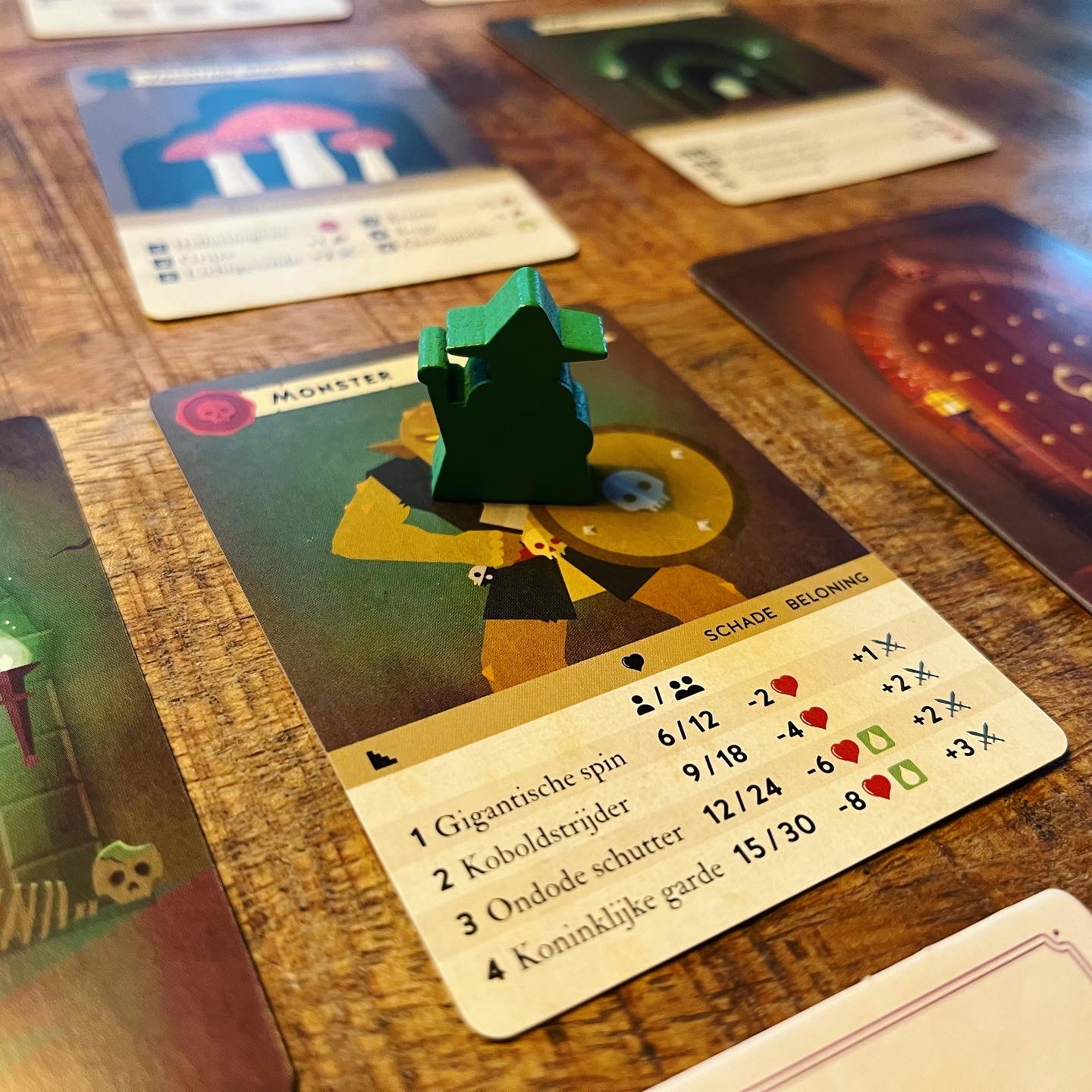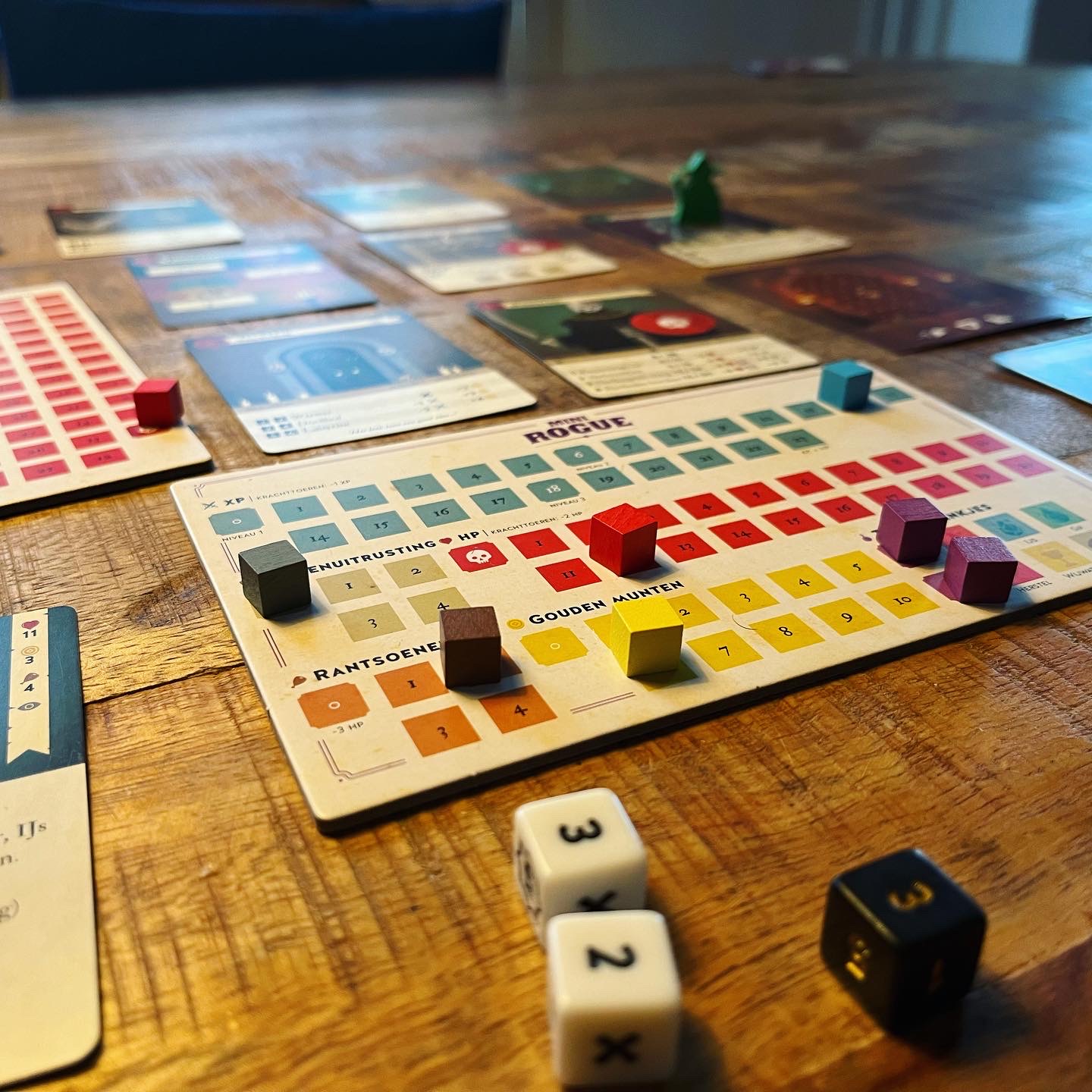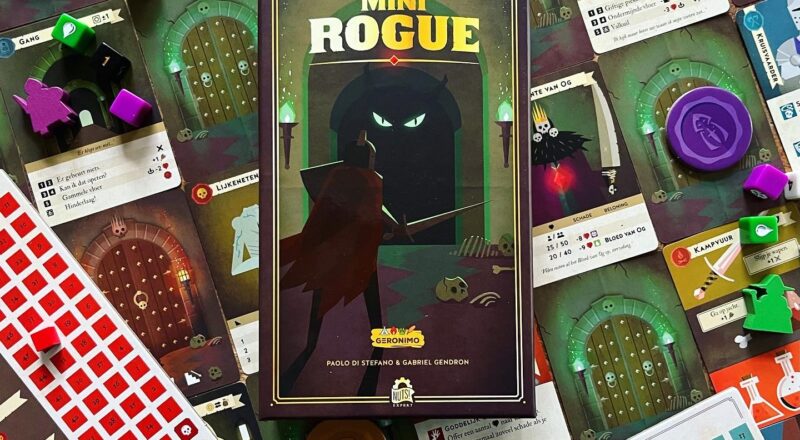Ah, the end of the dungeon is in sight. A precious gemstone, the Blood of Og, is laying there up for grabs. Your rations have run out, your armour is worn out and your life points are almost depleted, but you have managed to reach the end. At least, that’s what you thought – you celebrated too soon. One more trap you managed to dodge, but in the last room you were slaughtered by a giant serpent. Time to start all over again in this (Mini) Rogue(like).

Background and goal
‘Roguelike’ is a subgenre of role-playing computer and video games. In such games, players slowly descend into dungeons and explore different rooms in randomly generated levels. In these randomly generated dungeons, players encounter monsters and other kinds of enemies, traps, treasures and more. The death of the player’s character is often permanent. All experience points and equipment a player has gained is permanently lost upon death. The name of the genre roguelike was inspired by the computer game Rogue. Rogue is one of the first games with the typical characteristics of the genre. The characteristics of roguelikes have been and are being implemented in more and more computer games such as the Binding of Isaac, FTL and Hades.
Mini Rogue, as the title suggests, is also inspired by Rogue and the roguelikes. In Mini Rogue, one player or a team of two will enter this randomly generated dungeon to discover the treasures (especially the ‘blood’) of Og and confront (and hopefully defeat) Og’s final form. Hopefully, players will be able to reach the end of the dungeon because, as with the computer games, death is very much permanent.
Setup
Mini Rogue can be played both solo and cooperatively. I will mainly focus on the solo version of the game in this review. The cooperative version will for the most part play very similar, but there will be some minor differences.
At the beginning of the game, one chooses a character. The different characters are the stereotypical archetypes everyone knows from role-playing games such as Dungeons & Dragons. You might be familiar with the wizard, the paladin or the thief. Each character has special characteristics and a unique starting setup. Players set up their personal player board. The player board includes players’ experience, life, equipment and acquired income (shiny coins). They also place some dice nearby and take 1 hero die and 1 dungeon die and put those in their personal supply.


Players shuffle the hall cards, form the dungeon with nine random cards and a stack of guard cards. Or… at least one zone of the dungeon each time, because next to these cards they also place the dungeon board to keep track of which zone and which floor of the dungeon they are currently on. On this board, they will also keep track of enemies’ lives. Players place their figure or token on the card in the top left of the dungeon, this card is flipped open and players are ready to enter the dungeon.
Gameplay
During the game, players try to explore the different floors of a dungeon while fighting off monsters, dodging traps, finding treasures and more. The dungeon has several floors made up of different zones, and each zone consists of different halls (the cards). During a turn, players must first deal with the challenges of the hall they are standing in (often by rolling dice) and then (if they are still alive) they can move to the next card. Players move a card down or to the right side (if possible). Depending on the status, players can flip up these cards before making a choice to check which hall they wish to visit. Once they reach the exit of a zone (possibly after defeating a guard (a kind of boss monster)) they move on to the next zone and possibly next floor. At the end of a zone, players must still have enough food or otherwise they lose life.
There are different types of halls that players have to face the relevant challenges in different ways. Often, players have to roll their available hero dice and dungeon dice to do so. On certain maps, players may come across a treasure, a grave, a trap etc. They roll their available hero dice to determine whether the challenge of the hall is defied and the dungeon dice to determine the consequences and/or reward. There are also rooms containing merchants, where players can spend coins for resources and there are also campfires where players can rest for bonuses.
There are also rooms with monsters, of course. Which monster on the map players face depends on the current floor. Players indicate on the dungeon board how many life a monster has and then roll dice to fight. The player rolls all the hero dice, the dungeon dice and any poison and/or curse dice. The latter mentioned dice a player may get as a result of an effect of a card. The available hero die or dice determine how much damage the player deals. Special actions may allow players to re-roll certain dice. The curse die possibly reduces the damage done and the poison die may possibly do damage to the player. The dungeon die determines whether and how a monster’s attack hits. Fighting continues until a monster or player is defeated.


Once players have defeated a zone, they enter next zone. All room cards are shuffled and a new zone is placed face-down on the table. This continues until the player reaches the end of the dungeon alive or once the player dies.
Verdict
Mini Rogue does exactly what it promises: a roguelike in the form of a board/card game. In Mini Rogue, like roguelikes, players slowly descend into dungeons and explore different rooms in random and procedurally generated levels. In these dungeons, players encounter monsters, traps, treasures, merchants, ghosts, tombs and even allies. They face different challenges and choices. Players must be prepared for the possible challenges and battles otherwise hefty consequences await. The choices may be simple: which hall will I visit next and how and when will I use my special equipment and resources? These choices have a clear impact on the gameplay.
The biggest charm of Mini Rogue is in the variety due to the randomly generated zone composition due to the different cards. There is a wide selection of cards and only nine of them are used each zone. As a result, you don’t know exactly what challenges and choices await you. Which monster appears varies from card to card and floor to floor.
The randomly generated dungeon and the different characters provide a varied challenge. Experienced players can adjust the difficulty level for even more challenge. Mini Rogue includes a cooperative mode, but its solo mode is especially recommended by myself due to its small footprint.




